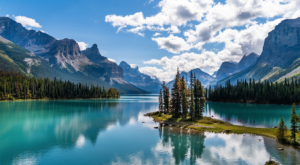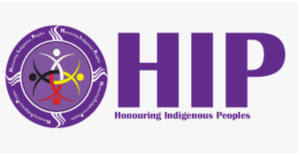Guardians
There is More Good in the World than Bad
Indigenous and Non-Indigenous Peoples Working Together on the Environment

It seems as if these days we hear mainly bad news stories about things that have happened to Indigenous Peoples, some many years ago, mainly from actions of non-Indigenous peoples, and many as a result of the INDIAN ACT which was created in 1876.
The heart-wrenching finding of the graves of 966 children located at former residential schools is a case in point. The pain created by this sad part of our history to all Indigenous peoples needs to be recognized and acknowledged by all Canadians. Going forward Indigenous peoples need to be listened to, understood, given space and allowed to grieve. In order for there to be reconciliation both Indigenous and non-Indigenous people need to heal from our past. We all need to know the truth before there will be reconciliation.
Notwithstanding the above, there are though many good things happening to, for and by Indigenous Peoples, and as a result, for the country. Past blogs have mentioned some of them. They include:
The increasing number of high achieving Indigenous people who have continued to stay connected to their Indigenous roots e.g. The current Head of the Canadian Bar Association is Indigenous, Murray Sinclair is the new Chancellor at Queens and if you are a hockey fan you will know Carey Price, the First Nations goaltender for the Montreal Canadians, almost single-handedly beat the Toronto Maple Leafs and Winnipeg Jets, and Las Vegas Golden Knights (If you are a Leafs, Jets or Knights’ fan you may consider this to be bad news!)
I have also mentioned the successful education system created and run in Nova Scotia by the Mi’kmaq for the Mi’kmaq and the business successes of their fisheries and obtaining control of Clearwater Seafood.
Just last week a number of Indigenous Communities in B.C. have put together a consortium of First Nations communities to offer to purchase 50% of Trans Mountain Pipeline.

I recently attended a webinar sponsored by The Indigenous Leadership Initiative (ILI) about their GUARDIANS Programme. The GUARDIANS is an Indigenous Programme designed and run by Indigenous Peoples to conserve and manage their territorial lands. This includes making land use decisions, monitoring wildlife (animals and fish), looking after the health of the boreal forests, educating the youth and reducing the impact of climate change.
The programme was first funded with $25 million spread over 5 years from the 2017/18 budget. Some of the key players behind the ILI and GUARDIANS are: Miles Richardson, a Haida and former commissioner of the B.C. Treaty Commission, Author Bev Sellars and Ethel Blondin-Andrew, Canada’s first Indigenous woman Member of Parliament, as well as the current Director, Valerie Courtois, an Innu from Labrador.
 Former Prime Minister Paul Martin and U.N. Ambassador Bob Rae are both supporters. They work in partnership with a number of groups including Ducks Unlimited, The University of Guelph and the International Boreal Forest Framework. There are now 90 programmes in existence across Canada
Former Prime Minister Paul Martin and U.N. Ambassador Bob Rae are both supporters. They work in partnership with a number of groups including Ducks Unlimited, The University of Guelph and the International Boreal Forest Framework. There are now 90 programmes in existence across Canada
https://www.indigenousguardianstoolkit.ca/map
The webinar featured a number of Indigenous Young People from across the country telling their stories of their training and what they are doing to care for the environment. Their stories included catching both invasive green crabs and poachers (not related), monitoring the wolves and cariboo, tracking the salmon and guiding visitors. Several communities of First Nations and Inuit are working together to protect the beluga whales and polar bears in and around Churchill.
The programme provides both education and employment to these young people.
As Ethel Blondin-Andrew said, (I para phrase) “Looking after the environment is what Indigenous Peoples do best. The land is core to our being.”
I was immensely impressed with their enthusiasm and commitment. A far cry from the drug and suicide stories amongst young indigenous people we hear about.
Another feature of this programme is it provides an opportunity for Indigenous and non-Indigenous peoples to work together on a common concern THE ENVIROMENT. What could be more timely and important? Furthermore, The Guardians are looking for partners.
 Although not partners with the Guardians, one such group connecting Indigenous and non-Indigenous young people together with a focus on the environment is Honouring Indigenous Peoples*
Although not partners with the Guardians, one such group connecting Indigenous and non-Indigenous young people together with a focus on the environment is Honouring Indigenous Peoples*
Honouring Indigenous Peoples is a partnership between Rotary and Indigenous Peoples.
COVID permitting, a weekend is being planned at Camp Kawartha in Ontario with 25 Indigenous and 25 non-Indigenous youth (Grades 9-11) for some land-based training during Thanksgiving weekend. This is to be the first of many combined get-togethers designed by both Indigenous and non-Indigenous elders. This will result in the building of friendships, learning about treaty relationships, Indigenous heritage, a better understanding of each other, and what it means to be a good steward of the land.
There will be follow-up engagement of the youth afterwards.
As I listened to the young people and elders during this webinar, I thought about how few in Canada know about this fabulous Indigenous initiative and the opportunities it presents to work together to help preserve our environment. **
So now you know of its existence. If you want to know more, click on https://www.ilinationhood.ca/mission
Till next time,
Chris Snyder
* Honouring Indigenous Peoples was started in 2014. Our coast to coast board is 50% Rotary and 50% Indigenous and 50% female. Chris Snyder is the founding chair and current co-chair with Karen MacKenzie, a Metis Cree from Edmonton.
** The Rangers programme in Australia is a similar Aboriginal People’s environmental programme.
You May Also Like

Cambodia!
January 13, 2019
Getting Along and the Golden Rule
July 31, 2022